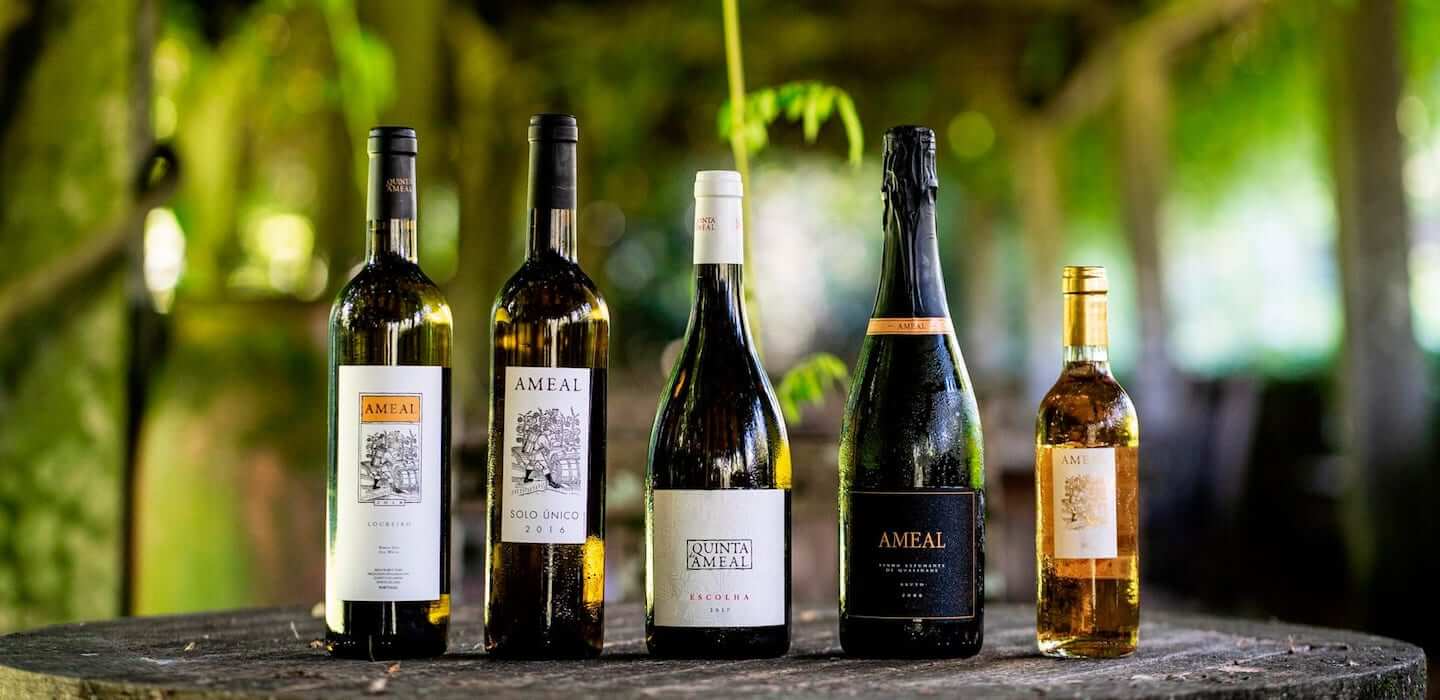Road trip in Portugal
A road trip in Portugal is about seeing and feeling a beautiful country and witnessing a rich international history and perhaps discovering a great wine culture. And that is the theme of this comprehensive list of best places to visit on your road trip to Portugal. It may not be the very first country you think of when looking for new wines you can taste, but it is also beside the beauty and the friendliness and the climate a highly estimated wine country. Portugal is the perfect travel destination for a road trip from north to south. What an adventure!
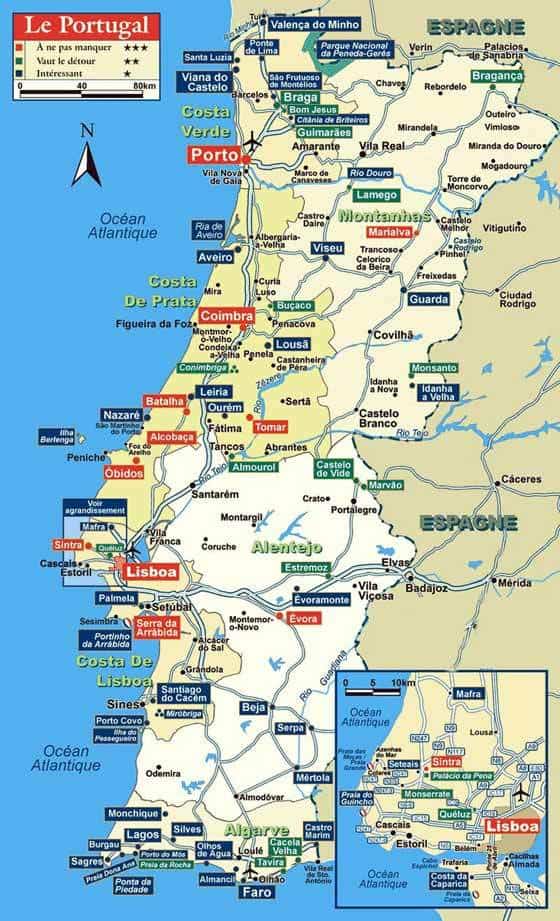
Road trip in Portugal from north to the Algarve coast and then there is Madeira
When you read this article about a possible road trip in Portugal, you will get a lot of input for a car, bus, bike or train journey in Portugal and a chance to meet some of Europe’s friendliest people. Portugal is a beautiful country with magnificent scenery from mountains to large rivers to the Atlantic Ocean and the wild north towards Spain. The wine culture is among the most interesting in the world on top. And the food very tasty. Traveling in Portugal with a food and wine theme is not to be despised.
On a road trip in Portugal you get to know Portugal from the north, across Porto on to Lisbon and all the way to the Algarve coast, which many of us have already visited, but Portugal is so much more.
The Portuguese have the world’s two perhaps best dessert wines Port Wine (See below) and Maderia. The Portuguese have been trading wine with the rest of the world since the beginning of the 18th century. It is a large wine country from one of the world’s largest colonial powers back in the day.
However, the story of Portugal as a travel country and its wine culture is also about Madeira. Scroll to the bottom here to read about the wonderful Maderia wine and its history.
The Portuguese sold wine to the Roman Empire a little over 2000 years ago
Portuguese wine is a very delicate thing that people from all over the world and especially Europe taste to their satisfaction. Besides being a popular drink, it has been shown to provide several health benefits. The Portuguese have a long history of wine and know how to sell them to the Roman Empire, while parts of Portugal were under the Roman Empire. The very name Lusitania, as Portugal used to be, comes from the word Lusa, son of the Roman god of wine. This proves how good Portuguese wine was and how popular it was throughout the European continent, especially the Iberian region.
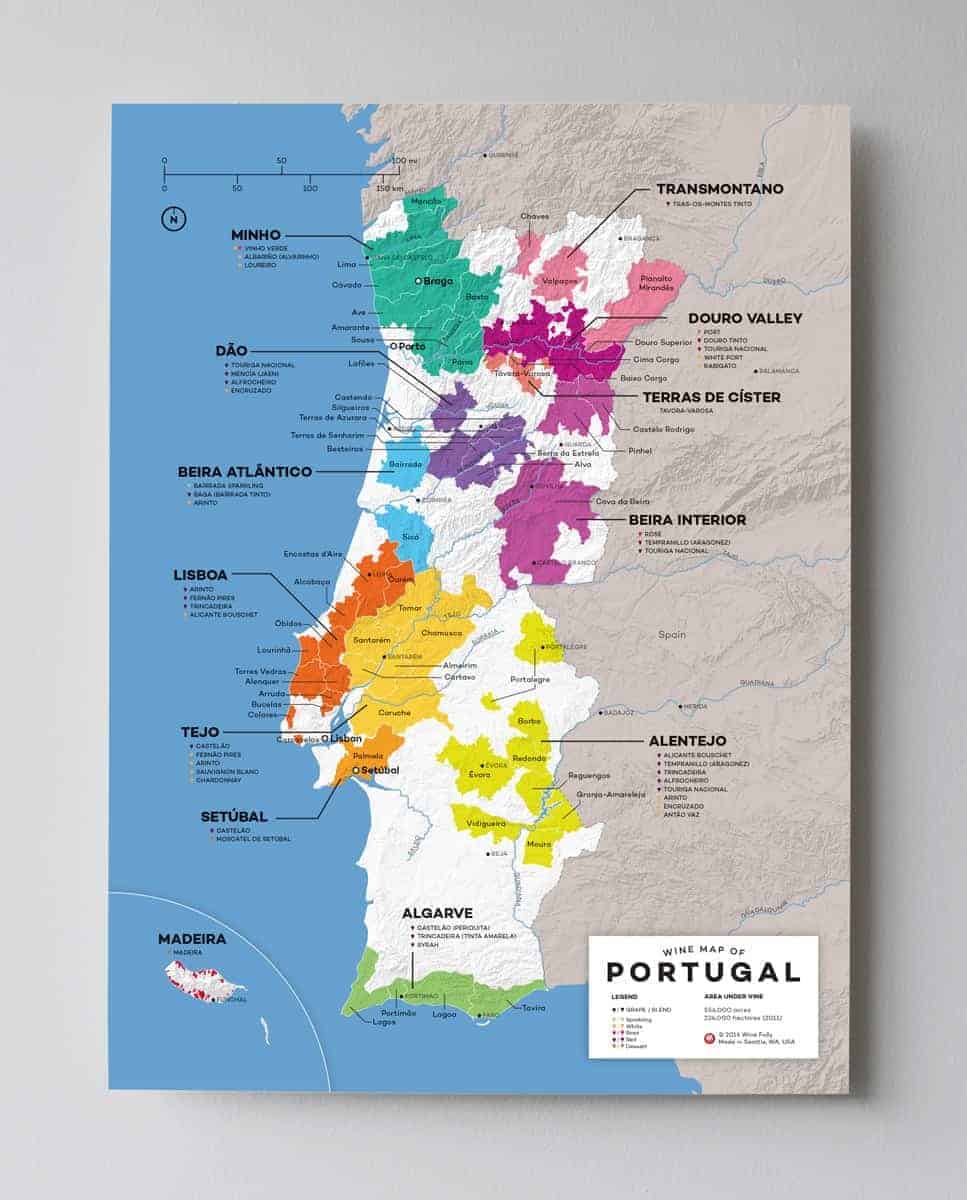
Road trip in Portugal with a wine theme: Wines of Portugal, the map, the wine regions, and the big country just waiting for a visit
On a road trip in Portugal, you get to taste some amazing wines
Almost every wine enthusiast knows that the finest wines produced in Portugal have historically been Port and Madeira, 2 dessert wines enjoyed all over the world. However, there is much more to Portugal’s wines than that, and each variety is as impressive as the well-known Port wine.
Portugal has a number of different wine regions, each producing and using its own distinctive grape varieties. This is actually what makes Portuguese wine so special among other wine-producing countries. The wines produced in Portugal are made from original grape varieties, all of which are characteristic of the region. Government controls are in place to ensure that all wine produced in Portugal is of the highest possible quality.
Vineyards in Portugal vary in their climatic conditions, soil types and thus grape varieties. This gives the wine a distinct taste from any part of the country. There are also varieties such as Alentejo, Douro and Dao. The different varieties are called “casta” and that is what gives the different characteristics for each of the different wines. Portugal is also known for its advanced vinification methods combined with processes that give wines a distinctly high quality. It is often said that the whole idea of classifying wine and therefore approved designations first started in Portugal to prevent the blending of different quality. Portugal is one of the largest producers and suppliers of wine in the world.
No road trip in Portugal without seeing the Douro Valley
The Douro River wakes up in Spain, spreads through Portugal as on a lazy Sunday morning, and ends in Portugal’s second-largest city, Porto. It feeds vines and olive trees along the way, crosses the sun-baked landscapes, and crosses dozens of sleepy villages.
The valley itself is a UNESCO World Heritage Site and one of the oldest wine regions in the world. It is also home to lovely port wines. Taste e.g. port wine t at one of Douro’s best wineries Quinta de Santa Eufemia, a family-run winery just an hour’s drive from Porto, known for its warm hospitality and its traditional way of making wine. Or visit Quinta do Pego, a hilltop property complete with hotel accommodation, where you can drink your port wine in the most beautiful setting imaginable.
It is not easy to work in the vineyards of the Douro – vines are grown in slate-like rocks on steep hills with man-made terraces under harsh weather conditions. Still, hard work pays off. The Douro offers excellent, special wines and scenic landscapes that are just as spectacular when viewed from the countryside as from a river cruise.
Douro as a wine district is from 1756
The demarcated wine region of the Douro dates back to 1756 and was founded during the reign of King José I by his minister, Marquês de Pombal. The area stretches along the axis of the Douro River with a vineyard of more than 40,000 hectares, divided into three sub-regions: the Douro Superior, which stretches from the border between Portugal and Spain through the Alto Corgo, the heart of the Douro, where many of the best wines are produced up to a distance of approx. 90 km from the city of Porto, Baixo Corgo.
The cultivation areas in this area are sheltered by the Marão Mountains, ie protected from the influence of the Atlantic Ocean. The weather is typically dry with cold winters and unusually hot summers, which adds special features to the area’s terroir, soils that are beneficial to the quality of the vineyards.
It is in the Douro that port wine is born, the greatest ambassador for Portuguese wines, but in recent decades, table wines from the Douro have gained worldwide popularity.

Road trip in Portugal: See why it is called port wine, the old boats in Porto that transported the wines from and to the port
The grape varieties in the Douro, the most beautiful part of your road trip in Portugal
The grape varieties grown in the region are famous for their history. Some varieties are from the Middle Ages. The best varieties for the production of port wine are Touriga Nacional, Touriga Franca, Tinta Barroca, Aragonez (in the area known as Tinta Roriz) and Tinto Cão as well as significant varieties in the area, such as Tinta Amarela (Trincadeira) and Souzão. The production of white vines is basically maintained by planting varieties such as Malvasia Fina, Gouveio, Rabigato, and Viosinho. Moscatel Galego is used for the production of Moscatel.
The name “port wine” comes from, the wine is stored and sold from the port located between the cities of Porto and Vila Nova de Gaia. The wine was brought down the river in the traditional “Rabelo” boats and aged in warehouses in Vila Nova de Gaia, as this area shows and little difference in temperature throughout the year.
The green wines of Minho, a must-see on a road trip in Portugal
The Portuguese have a wine for the hot days, where it should be cooling and invigorating. It’s called Vinho Verde.
Vinho Verde literally translates to ‘green wine’ – even though green actually means young. Who knew that immaturity for wine could be such an advantage? Vinho Verde tends to be light and fresh with a flirtatious touch of fizz.
To taste Vinho Verde on-site, head to the historic province of Minho, Portugal’s largest wine region in terms of production. The Minho Green Wine Trail takes you through many beautiful wine regions. Try Quinta da Aveleda, known for its romantic abandoned gardens and vineyards, and Quinta de Soalheiro for its award-winning Alvarinho wines.
While in Minho, take in some of the charming towns and historic sites such as Guimarães, Portugal’s medieval capital; or Braga, whose main attraction is the Bom Jesus Sanctuary, with panoramic views and a 577-step baroque staircase.
The wine region “Vinho Verde” (the green wine) is the largest wine production in Portugal with 34000 hectares spread along a geographically well-located coastline, rich in water supply, with mild temperatures and abundant rain, producing a homogeneous and mainly wine with high pleasant tartaric acid, excellent for white wine production.
The Alvarinho variety is the top brand in this region. The wine is naturally light, pure, refreshing and aromatic, unlike any other in the world.
Natural microclimates, wine types, grape varieties and ways of growing them have led to the division of the demarcated area of green wine into nine sub-regions: Amarante, Ave, Baião, Basto, Cávado, Lima, Monção e Melgaço, Paiva and Sousa.
The predominant white varieties are Alvarinho, Arinto (Pedernã), Azal, Loureiro, Avesso and Trajadura, and white varieties such as Borraçal, Espadeiro, Brancelho and Vinhão.
Since 1999, the region has been producing high-quality sparkling wine.
Alentejo wine region in Portugal
The road trip in Portugal with a sharp focus on the wine culture continues to Alentejo. The wine region, located in the south of Portugal and has a climate characterized by the Atlantic Ocean. It brings cool summers and mild winters and resultant wines that are not too mature or “opulent”. Wines retain their acidity and freshness and make them suitable for even robust food.
The area is sparsely populated, with lots of whitewashed architecture. Vineyards are huge and the feeling of mingling with nature is great.
Many tourists, including Danes, flock to southern Portugal for a summer holiday by the sea. Golf with salt in the air, excellent hotels and restaurants.
The Algarve is the best place to go for a beach holiday, but it is not the best wine region. Instead, travel to the Alentejo for the sake of the wines.
The area itself is large and agricultural with plains of wheat, cork oak and olive trees stretching far and wide. The warm Mediterranean climate produces many wines that are easy to drink, especially red wines. And although the region has only grown in international attention in recent decades, its tradition of viticulture dates back to the ninth century BC.
Farms such as Adega José de Sousa and Herdade do Rocim also produce a form of wine called Vinho de Talha, which produces in clay pots using a technique dating back to ancient Rome.
If you are hungry while on the trail, pair your Alentejo red with one of the region’s favorite traditional dishes – like ‘porco preto’, juicy pork from the Iberian black pigs.
Alentejo, the land of the great expanses
It is a region that inspires love of nature that awakens our soul and makes us see the greatness of Portugal’s nature. Alentejo is one of the most beautiful places in the world, they say.
The story is as big as the landscapes. There are many places where we can find traces of Phoenician culture for more than 3000 years. The Celts and especially the Romans, who through their books, mosaics, teachings, cities, and monuments have left a significant legacy. Skilled in agricultural techniques, they turned to the wine and vineyard community in Alentejo. The Romans loved their wine and the Roman army on conquest drank wine every day. So they took viticulture with them on the conquests of Spain, France, and Portugal. Wine is needed!
Production in the Alentejo probably produced the first export of Portuguese wines to Rome. The Roman influence was so crucial to the growth of viticulture in the Alentejo that today, two thousand years after the conquest of the region, the traces of Roman civilization are still noticeable in daily activities and can be felt through tools used intensively until a few years ago, such as the trimmer or clay containers for fermenting must and the subsequent storage of wine still in use today.
The Arabs came to this country after the Romans and Visigoths, before the conquest. They built various castles – some of them designed as Muslim mosques – and walls to defend cities.
From that time until today, Alentejo has continued to expand with growth focusing on agriculture, livestock, fisheries, industry (where cork is of particular relevance) and more recently tourism, offering a wide range of quality products for wine tourism.
The region occupies more than a third of the mainland, making it one of the largest wine regions in Portugal and enjoying a hot and dry climate with an excellent “terroir”, which has given rise to numerous investments in the wine industry, resulting in the production of some of the best Portuguese wines and then in the international recognition of Alentejo wines.
Bounded in 1988, the region is divided into eight sub-regions: Reguengos, Borba, Redondo, Vidigueira, Évora, Granja-Amareleja, Portalegre and Moura.
Roupeiro, Antão Vaz, and Arinto are the main white grape varieties in the region. In the case of red varieties, the value of Trincadeira, Aragonez, Castelão, and Alicante Bouschet (French variety) is emphasized.
White wines from Alentejo DOC are typically moderate, slightly sour, and with aromas of tropical fruit. The reds are full-bodied, rich in tannins and aromas of wild and red berries.
In short, Alentejo wines bring great joy, whether it is white, rosé, or red wine. They are full of intense aromatic abundance, round and smooth, with a rare ability to be intoxicated when they are young, but they know how to age with a difference.
Dao wine region, perfect for a road trip in Portugal
The Dao wine region is centered around the old town of Viseu in northern Portugal. Its reputation is to produce some of the best red wines in the world. The stunning landscape has pine forests that alternate with vast vineyards overlooking the vast Estrela Mountains.
Fantastic small restaurants, hand-picked wine hotels and local dishes based on simple gastronomic traditions will make you miss it until you travel.
If you have not heard of the Dão Zone, do not worry – it may not be the most popular, but it just means that there are more hidden gems to discover.
Grapes in the Dão area grow at higher altitudes, protected by mountains on all sides in a temperate climate. If you are looking for dark, balanced wines with good acidity, this is the place to find them.
One of the most popular and noble varieties in the Dão region is the Portuguese “queen” of grapes, Touriga Nacional – a soft, dark and intensely aromatic grape attributed to the velvety smoothness of many red Dão grapes.
Dão-Lafões is located in the central area, between the coast and the hinterland of the country and has a rich ancient heritage that spans from prehistoric times to the present with Roman and medieval traces.
In the Middle Ages, the vineyard was essentially built by priests. They learned most of the farming methods, and since they had a great influence on the population, they succeeded in filling a lot of land with vineyards and increasing wine production. However, it was not until after the 19th century after the plagues of mildew and phylloxera that the area began to flourish (Dão wine was very well known to Europeans at the time when phyfloxera decimated European vineyards). The wine production area was demarcated in 1908 and became Portugal’s second demarcated area.
From the Middle Ages in Portugal to today’s high-tech viticulture
In the Middle Ages, vineyards were essentially cultivated by priests. They learned most of the farming methods, and since they had a great influence on the population, they succeeded in seizing a lot of land and making vineyards and increasing wine production. However, it was not until after the 19th century after the plagues of mildew and phylloxera that the area began to flourish (Dão wine was very well known to Europeans at the time when phyfloxera decimated European vineyards). The wine production area was delimited in 1908 and became Portugal’s second delimited wine area.
Rich and varied is the local gastronomy in this area. It is also an attraction along with the Dão wine. With an area of approx. 376,000 hectares, this region has grown between mountain areas and valleys with gentle slopes and round hills with a cold and rainy climate in winter and dry, hot summers, unique conditions for a unique wine.
The wines of Dao
Variants in Dão are very different. As for the whites, the most important are: Encruzado, Bical, Cercial, Malvasia Fina, Rabo de Ovelha and Verdelho. In the reds, in addition to the Touriga Nacional, Alfrocheiro, Jaen and Tinta Roriz, we also have the lesser known Baga, Bastardo and Tinta Pinheira. The white wines are very aromatic, well-balanced and fruity. The reds are full-bodied, aromatic and complex after aging in the bottle.
Lafões is a small transitional area stuck between the designations Dão and green wine, cut by the Vouga River, with mainly granite soils, the white reference varieties being Arinto, Cerceal, Dona Branca, Esgana Cão and Rabo de Ovelha, the red of which is dominated by The Amaral and Jaen varieties. Typically, the wines from Lafões show a certain acidity, similar to the neighboring name Green Wine.
On the Dão wine route, stop at Paço dos Cunha’s de Santar or Quinta do Cabriz. Both vineyards house famous restaurants, where every drop of wine gets the gastronomic accompaniment it deserves. Then we have not promised too much 🙂
Lisbon as a wine region, the crowning destination on your road trip in Portugal
The Lisbon wine region is a long and thin region north of Lisbon, bordering the Atlantic Ocean. The wind is inevitably a strong influence along the coast, and no wonder coastal vines are windswept and hard-pressed to ripen their grapes. But just inland, the ridges of the hills and mountain ranges provide some protection for many of the eastern parts of the Lisbon area.
It is precisely in this area that a number of top wine places from Lisbon are located in or around the DOC regions of Bucelas for Arinto-based white wines and Alenquer, located in the southeast of the Montejunto Mountains and therefore a little colder, a little less windy and wet. Grapes can ripen well, and especially red wines can be of the highest quality.
Portugal never fails you, even the capital is in a wine zone! Greater Lisbon consists of nine wine regions, each with its own characteristics.
If you must choose one of the ones you want to visit, do so Colares. This small sub-region is located in the Sintra-Cascais Natural Park with Sintra’s fairytale palaces on one side and a coastline with cute fishing villages on the other.
Vines here grow directly on the sand, which looks strange and random but gives good results – like the heavily tanned red grapes mixed from the original Ramisco grapes.
About 50 acres of Colares vineyards are left behind due to the growth of the suburbs. It is a simple day trip from central Lisbon; help the region by booking a wine tasting experience with one of the local producers, such as Adega Regional de Colares or Adega Viúva Gomes.
Heavenly wine in Estremadura from the time of the Phoenicians
It was the Phoenicians during their exploration of the seas who, on voyages to Portugal, promoted the production of wine in Portugal. They reached as far as distant lands like the British Isles, and kick-started the production of wine at the mouth of the Tagus River, bringing vines from Syria and were thus responsible for the promotion of wine in Portugal, where they found favorable and natural conditions for its growth.
The region where the actual Estremadura is located has been under Muslim rule for four centuries, and viticulture was only revived after the nation was established and the land was reclaimed by the Moors.
This vocation was strongly promoted by the knowledge imparted by the religious orders, first by the Benedictines, then by the Clunicens and finally by the Cistercian order, which had a prominent place in Alcobaça in Estremadura. The clearing of the land made it possible to resume hunting grounds with new areas for the vineyards and the cultivation techniques mentioned by “geopónicos” from Roman times to be resumed.
An age of peace and economic growth has emerged as a result of the discovery and commercialization of goods produced at sea and on land, and wine is a pioneer in this region.
This state continued until the dynastic crisis triggered by the death of King Fernando, exacerbated by the situation in Europe with famine, epidemics and conflicts and the subsequent economic recession.
Against this background, the wine sector is seeing a new setback that is taking some time to recover due to the prioritization of discoveries in the 14th and 15th centuries and the recruitment of competent men for this task.
While it had an era of wine overproduction, the 19th century was marked by a collection of important facts for the vine culture.
The beginning was marked by the French invasions, which in addition to leading to the abandonment of many countries after widespread looting on the route followed by the invaders also led, especially in Estremadura, south of Torres Vedras, to redirect all farm workers to defend Lisbon (the famous Torres line).
Phylloxera shut down Portuguese wine production, but as in football, they rose again.
The attack of phylloxera, an insect that invaded the roots of European vineyards, caused the death of many of Portugal’s vineyards. When the solution was found, the slopes of Estremadura were soon covered with vines again.
Consolidating the recovery of the wine culture and resuming its expansion throughout Estremadura, many regions have recognized their regional pastures.
With the publication of the decree of October 1, 1908, requirements were set for the delimitation of the regions of Carcavelos, Colares and Bucelas. The same may have happened to Torres and Alcobaça, but the hard-to-understand explanations contributed to almost 80 years of waiting.
The change in rural lifestyle habits, customer habits and the wine policy itself as a result of incorporation into the European Community has led to a rethinking of this system.
The selection of grape varieties, advances in technology, the knowledge of new designations of origin along with the winemaker’s efforts and information from the winemaker were the cornerstones of the current situation and placed the wines from Estremadura at a high level of well-deserved quality.
The main white grape varieties are: Arinto, Fernão Pires, Malvasia, Seara-Nova and Vital.
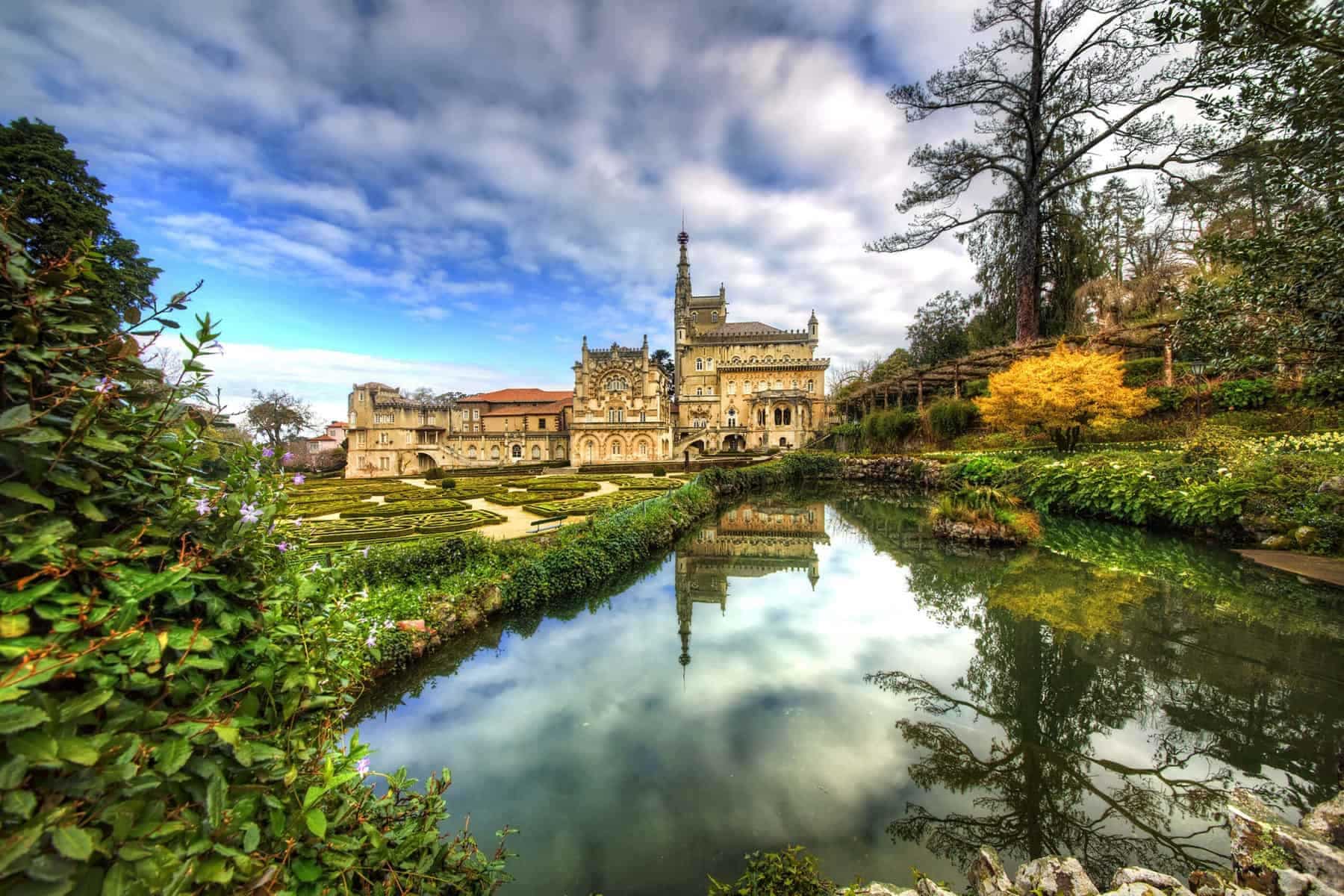
Bairrada castle
Bairrada: fertile clay, afternoon breezes, and white wines
Between the mountains and the coast, on rich clay soil, lies Bairrada (Portuguese for clay). Travel to Portugal with a wine interest must pass Bairrada:
Bairrada is a Portuguese wine region located in the province of Beira Litoral. The region has Portugal’s highest wine classification as Denominação de Origem Controlada. It is located close to the Atlantic Ocean, in which ocean currents have a moderating effect on the climate.
The wine region is best known for red wines and is one of the few wine regions in Portugal dominated by a single grape variety Baga.
A Portuguese red wine grape with great potential for producing great wines. The name simply means ‘berry’ in Portuguese. Baga has a thick skin and matures late. It produces dark wines with lots of structure. The grapes have a high acid content and are very tannic and produce wines that can be hard and astringent in their youth, but which soften with age and become seductively perfumed. Today, a lot of bagas are mixed with non-native grapes to get a softer wine, but the biggest Bairradas are pure old school Baga. The area also benefits from a breeze every day in the late afternoon, favoring the production of fresh, food-friendly white wines and sparkling wines, which are becoming increasingly popular thanks to the enthusiasm and skill of the younger generation of producers.
Bairrada, which comes from the Portuguese word for “clay” (the hub of its dominant soil type), is known for its red wine dominated by Baga grapes, which must make up at least 50% of any red Bairrada grape. The area also produces much of the country’s blended sparkling wine made from white grape varieties such as Bical and Malvasia Fina.
The area of Bairrada was a land of conquerors, wars between Christians and Arabs, at the beginning of the founding of Portugal, when the capital of the kingdom was Coimbra (Central Portugal). It was also a country that protected freedom, threatened by Napoleon’s invading forces, known battles were in Buçaco.
As it is close to the sea, the climate is usually Atlantic, with mild and rainy winters, a warm but slightly windy summer. During the ripening cycle of the grapes, the climate plays a significant role and is responsible for preserving the acidity of the grapes and providing freshness to the resulting wines.
If you only need to know one grape from Portugal it is Baga from Bairrada
The soil is divided into terraces with sandy clay and limestone. The vineyards for production are rigorous: the term ‘Bairrada’ must comply with a regulation stating that the grapes must be ‘made on’ lime brown or red ‘soils, on’ litholic humic or non-humic ‘soils or on a well-defined sandy soil.
The best wineries are limited in number. The area covered by the vineyards is no more than 10,000 hectares.
Bairrada is an area with many fine wines, made with high-quality varieties, such as Baga, red wines and Bical, white wines.
Get to know a new grape today: Baga from Bairtada. The dominant red variety is Baga. Wines made from this variety are full of color and rich in acids, but well-balanced and long-lasting. Recently, DOCs from Bairrada have been allowed to plant foreign varieties, such as Cabernet Sauvignon, Syrah, Merlot and Pinot Noir, which share the land with other national varieties, such as Touriga Nacional or Tinta Roriz. The white variety Fernão Pires (in the area called Maria Gomes) is the most grown. There are also the varieties Arinto, Rabo de Ovelha, Cercial and Chardonnay. The whites in the area are delicate and aromatic. The area’s sparkling wines are used as starters or for local dishes.
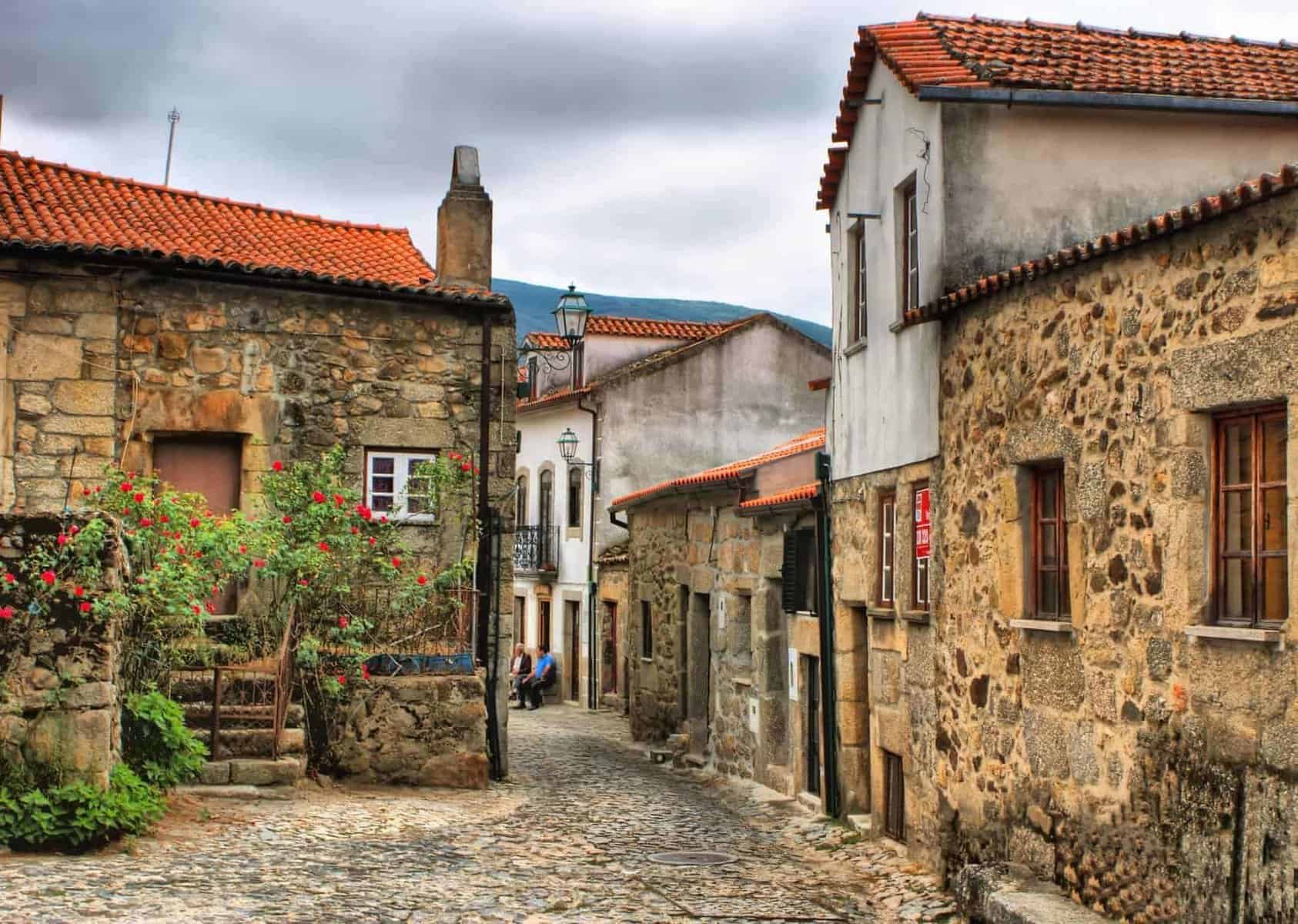
Village of Linhares da Beira, roadtrip in Portugal
Beira in inner Portugal, when you dig deep on a road trip in Portugal
Beira was one of the six traditional provinces or so-called comarcas in Portugal. The territorial expansion differs from the area called “Beiras”, which refers to three provinces in 1936, Beira Alta province, Beira Baixa province and Beira Litoral province. There is also a wine region called Beira VR. This very diverse area includes a wide expanse of inner Portugal south of the Douro and east of the Dão. Vineyards are cultivated on granite soils at relatively high altitudes. In the north, the grapes are similar to Douros, while in the south there are also a number of varieties. Great opportunity to make some exciting wines here.
It has a vineyard tradition dating back to the nation’s founding and is located in the hinterland of Portugal, with around 16,000 hectares of vineyards and a large selection of grapes.
In the Beira area, wine culture dates back to Roman times. There are traces of some granite stone facilities used to make wine.
Given the quality and social and economic value of wines from this region, certain rules were laid down to protect these wines, namely during the reign of King João I and King João III.
The wines are influenced by the mountains, as the region is surrounded by the mountains Estrela, Marofa and Malcata, which vary from 400 to 700 meters. In most cases, the soil is of granite origin, while the others are of slate origin due to the rugged and mountainous topography of the area. The climate of the area is very harsh with temperatures below 0 C. It is often snowing in the winter and the summers are very hot and dry. The product of this combination is white wines, very aromatic, sparkling and bright and red wines full of complex aromas of wild fruits and spices combined with a marked freshness.
The region produces white, red, and rosé wines as well as high-quality natural sparkling wines thanks to the many grape varieties that have made it possible to constantly find new flavors and aromas.
In recent years, this area has seen major developments around the increase in producers and the quality of wines. Beira Interior wants to see itself as an area of expertise and quality in the production of wines and occupy its position close to Portugal’s major wine regions.
The widespread white grape varieties are Arinto, Fonte Cal, Malvasia Fina, Rabo de Ovelha and Síria, while the reds are Bastardo, Marufo, Rufete, Tinta Roriz and Touriga Nacional with a frequent presence of very old vineyards.
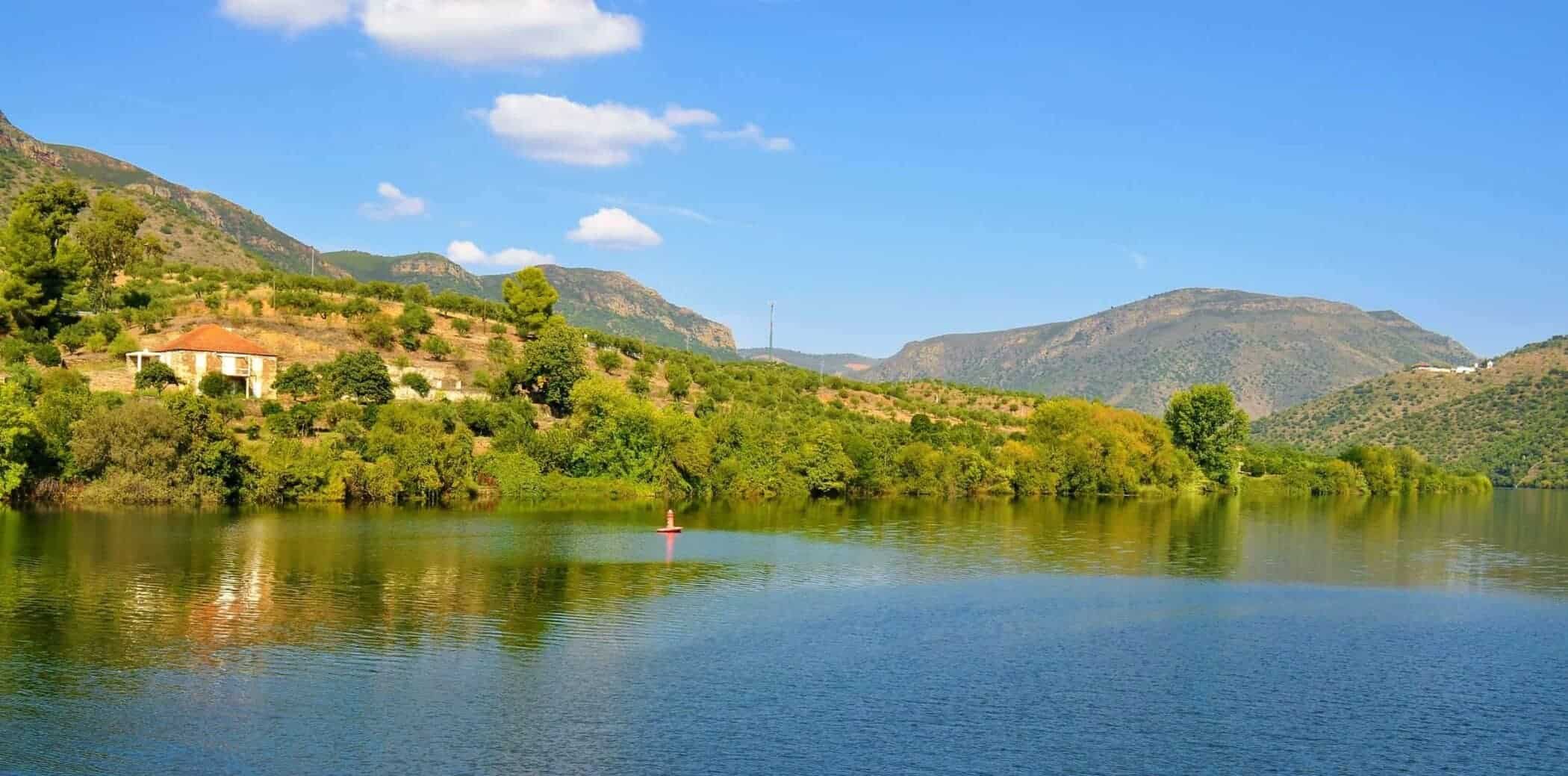
The river Douro, a house and the blue sky – Trás-os-Montes and Alto Douro Province – Portugal
Tras-os-Montes, for some true historic insight on your road trip in Portugal
Travels to Portugal, in order to gain a sense of the greatness and diversity of the country, should also go to Trás-os-Montes e Alto Douro, a historic province of Portugal located in the northeast corner of the country. There are many plateaus, river valleys, mountains and castles in Trás os Montes and Alto Douro. See. possibly the map above.
This remote area in the northeast of the country is bounded on one side by high mountains and on the other by the border with Spain (the name means ‘behind the mountains.’ The shy soils are similar to those of the Douro and grapes grown here are The climate here can be intense, with harsh winters and low rainfall in the summer. Red is often lighter and more aromatic than those of no.
Wine and wine produced in the Trás-os-Montes region were already cultivated during the Roman occupation.
The climate is dry and hot in summer, and the temperature often drops below 0oC in winter. The soil is basically granite, poor, with slate stains, and it is possible to find deposits of alluvial and gneiss in a small area.
The Trás-os-Montes wine region is divided into three sub-regions: Chaves, Valpaços and Mirandês. The vineyards of the Chave subregion are planted on the slopes of small valleys were tributaries to the Tâmega flow. The plateau of the Valpaços sub-region is rich in water supply. Planalto Mirandês is located on the plateau of Mount Modagouro, southwest of the city.
The dominant white varieties are: Côdega do Larinho, Malvasia Fina, Fernão Pires, Gouveio, Rabigato, Síria e Viosinho, and the reds are Bastardo, Tinta Roriz, Marufo, Touriga Franca, Touriga Nacional and Trincadeira.
The white wines are flattering and have a distinct floral scent. The red wines are often fruity and slightly astringent when quite young.
Setúbal, travels in Portugal where you see Lisbon and Setubal
Setúbal, 20 km from the capital Lisbon (Lisbon), produces aromatic dessert wines made mainly from Moscatel de Setúbal and Moscatel Roxo grapes.
The area is becoming a leading tourist destination thanks to the protected nature of Arrábida and Marinho D.Luis Saldanha National Parks, Sado Estuary Nature Reserve, Arriba Fóssil da Caparica Protected Landscape, excellent tourist infrastructure and cultural heritage buildings, rich in diversity and historical significance.
Wines have gained equal importance. The wine culture of Setubal has been able to integrate and adapt to modern times and is now universally recognized as a high-quality wine in the region. From the large farms dominated by the Castelão variety to Moscatel, one of the national dessert wines, this region has always played a leading role in the history of Portuguese wines.
The winemakers of this region have made prestigious wines and received several foreign awards, but the recognition comes from antiquity when in the late Middle Ages between the 12th and 15th centuries, the wine was the main export on the Setúbal Peninsula.
On the peninsula of Setúbal grape seed, dating from the 8th century BC, recent archaeological excavations have highlighted the ancient culture of wine dating back to the time long before the founding of Portugal.
It is estimated that the cultivation of the vineyards reached the valley of the river Sado in about 2000 BC.
The Setúbal Peninsula offers two styles of landscapes. One with vineyards planted on clay-calcareous soils, covered by the slopes of Serra da Arrábida, and the other covering flat or gently hilly composed of sand, perfectly suited for growing high-quality grapes.
The Mediterranean climate is temperate with hot dry summers and cool and rainy winters. Due to the proximity to the sea, the average annual relative humidity is high.
The Setúbal Peninsula includes the designations of origin, Palmela and Setúbal and the designation for regional wines ‘Peninsula de Setúbal.’ The name ‘Setúbal’ is reserved for the wines Moscatel of Setúbal and Moscatel Roxo. Most of the wines in the region use the variety Castelão (known in the region of the Setúbal peninsula Periquita) in its composition.
The white reference varieties in the region are Arinto, Fernão Pires and Moscatel from Setúbal, which are used in white wines and dessert wines from the origin classification of Setúbal. This wine has unique properties due to its floral aromas in white and the soft aromas of red spices and berries. Alfrocheiro and Trincadeira occur in red varieties.
Setúbal dessert wine, made from the varieties Moscatel and Moscatel Roxo, is one of the oldest and most popular wines in the world. Setúbal Muscat is a wine of excellent quality, especially when matured for many years in oak barrels. It is a wine with an intense aroma of orange blossoms.
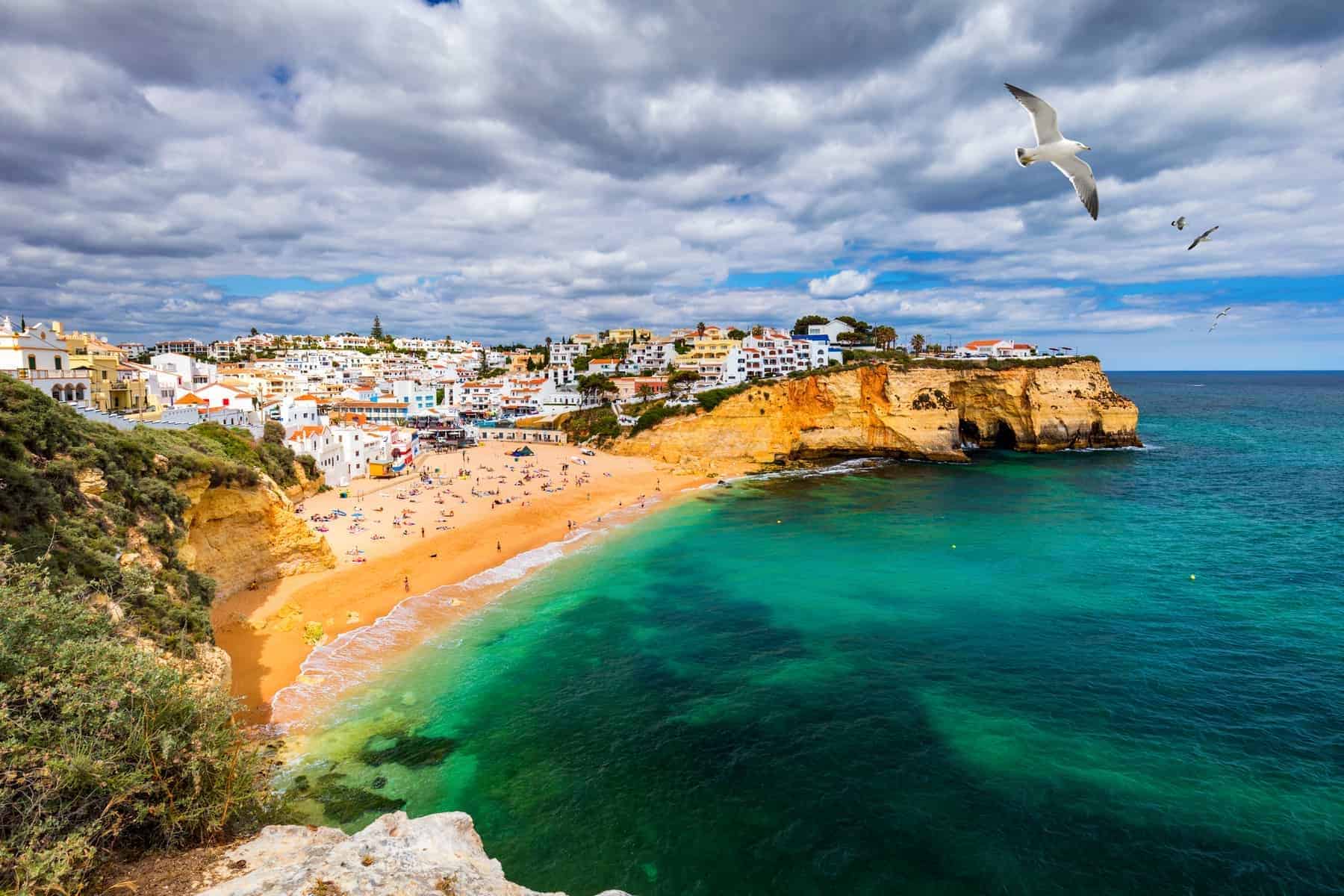
Carvoeiro and exceptional private beach in Algarve, Portugal.
Algarve
Situated along the Atlantic coast, the Algarve is a popular region for wine tourism and golf of course, or just chilling out on the wonderful beaches. It is home to four DOPs or sub-regions: Lagos, Portimão, Lagoa and Tavira.
An area of about 200 kilometers (124 miles) with golden sandy beaches and crystal clear water forming rocks and several cliffs. Regional delicacies, such as figs, almonds, carob and arbutus berry brandy, precede the recent growth of this region in terms of its wines.
This is an area with a very unique climate: it is close to the sea, but it is also influenced by the mountains Espinhaço de Cão, Caldeirão and Monchique (almost a continuous chain of mountains that cross the region, from the Spanish border to the Atlantic coast). The southern position and the mountain barrier that protects it from the cold winds in the north guarantee a dry, warm and windy climate.
The region has been demarcated since 1980, but only in recent years has it begun to revive its wine industry. It started with the replanting of grape varieties, modernization of vineyards and new methods of wine production.
Due to the characteristic soil conditions (sand clay and slate) and the climate of the wine, the Algarve region has four designations of origin: Lagos, Portimão, Lagoa and Tavira. However, much of the wine produced is part of the phrase “Algarve regional wine.”
The red varieties are standard Castelão and Negra Mole, and the white ones are Arinto and Síria. Syrah was one of the varieties used for replanting the vineyards and proved to be fully adaptable to the climate of the area and was therefore widely planted by farmers. The red and white wines are characterized by very ripe fruit, velvety and warm taste. The wines in this area have a high alcohol content.
At the time of the discoveries, the production of wine was significant because it was supplied by the caravels leaving Sagres and Lagos.
The Algarve, in the nineteenth century, was one of the few regions in Europe that had avoided the destruction caused by phylloxera because vines were planted in sandy soil near the sea.
A road trip in Portugal may also go to Madeira
As if you need an excuse to visit a lush tropical island, but we give you one anyway. It’s called Madeira’s wine. After Port, Madeira wine became Portugal’s second most popular fortified wine. It is available in a variety of varieties, from sweet to dry, each as special as the next thanks to a specific winemaking method.
How is this made? Generally, the wine is stored in stainless steel containers that are heated to a temperature of 45-50 degrees Celsius for at least three months and then rest for at least three months. Madera’s highest quality wines give up the method of artificial heating and leave barrels in the sun for heating naturally – often for as long as 20-100 years. To sample some fine Madeira wines, add Blandys Wine Lodge, located in central Funchal, and Vinhos Barbeito (just a 20-minute drive from the center of Funchal) to your Madeira Island itinerary.
If the thought of exclusive delicious fortified wines does not make you pack your bags, what can we say – there are still lush volcanic landscapes, tropical fruits and beautiful beaches. Travel to the northern tip of the island to plunge into one of the crystal-colored Cachalote natural swimming pools, nestled in volcanic cliffs; or bathe in the sun on one of the golden sandy beaches of the historic city of Machico.
Viticulture in Madeira dates back almost to its fifteenth-century obsession. The vines introduced here at that time were of Portuguese origin and also from other parts of Europe. The English, who settled there in the seventeenth century, increased and developed the production of vineyards.
The designation of origin Madeira was first awarded in 1990
The production of white, red and rosé wines was internationally recognized and led to the creation of the designation of origin Madeira in 1990.
Despite its microclimates, which differ in arid or more humid regions, it is safe to note that the country has relatively temperate climates with oceanic properties. The soil is volcanic and very fertile. The relief on the island is quite irregular, so vines are planted on the slopes of volcanic origin, adapted to the steep slopes and deep valleys.
The noble white varieties are Sercial, Verdelho, Boal and Malvasia, wine-made to give varying degrees of sweetness, sold in a dry, medium-dry, medium-sweet and sweet form. However, the most widely planted variety on the island is Tinta Negra, a red variety that can be easily adapted to the four sweet types.
The wine “Madeira” was considered by most European wine experts to be a rather elegant wine. It was also used as a perfume on the woman’s scarves. In England, Madeira and port wine first competed in court preferences. And William Shakespeare referred to Madeira wine while writing a play for King Henry IV. The character Falstaff sells his soul to the Devil in return for a piece of cold cloak and a glass of Madeira.
Visit Madeira
More travel info from Portugal
See the Intro to traveling in Portugal
Visit Portugal, The official travel site from the tourist board of Portugal
Lisbon, the charming capital of Portugal
Algarve, maybe Europe´s most dramatic and beautiful coastline
Golf is also a major reason to go to Portugal. Among the best golf courses in the world.



